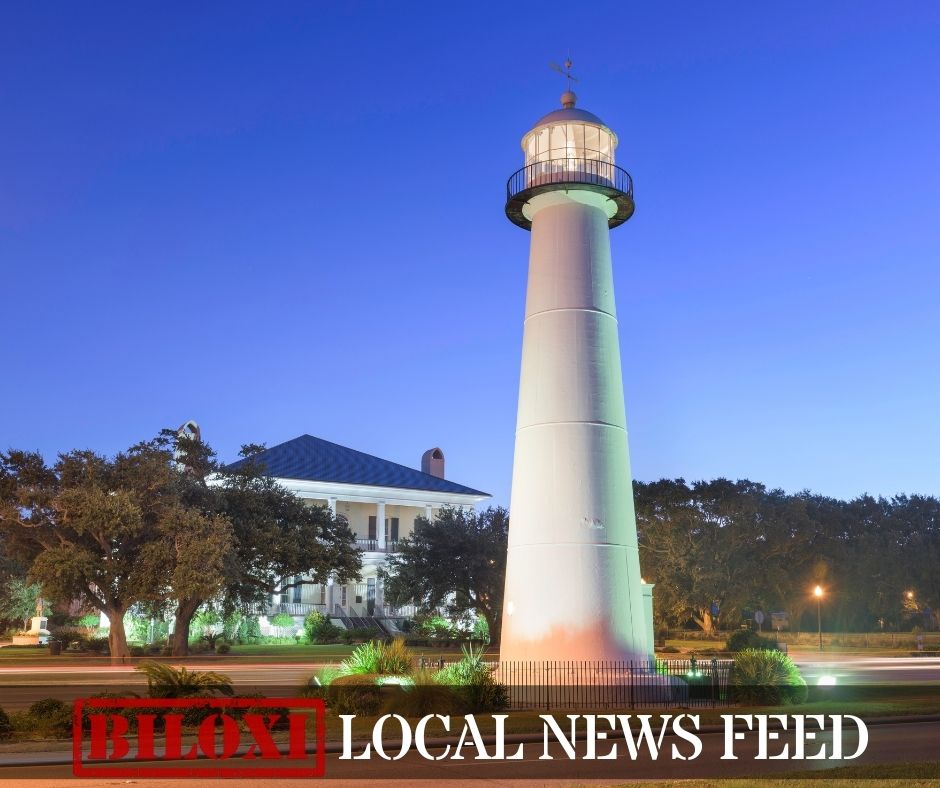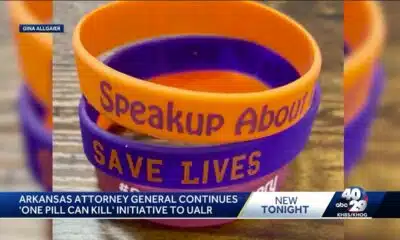Kaiser Health News
PBMs, the Brokers Who Control Drug Prices, Finally Get Washington’s Attention
by Arthur Allen
Thu, 11 May 2023 09:00:00 +0000
For two decades, patients and physicians eagerly awaited a lower-cost version of the world’s bestselling drug, Humira, while its maker, AbbVie, fought off potential competitors by building a wall of more than 250 patents around it.
When the first Humira biosimilar — essentially a generic version — finally hit the market in January, it came with an unpleasant surprise. The biosimilar’s maker, Amgen, launched two versions of the drug, which treats a host of conditions including rheumatoid arthritis. They were identical in every way but this: One was priced at about $1,600 for a two-week supply, 55% off Humira’s list price. But the other was priced at around $3,300, only about 5% off. And OptumRx, one of three powerhouse brokers that determine which drugs Americans get, recommended option No. 2: the more expensive version.
As Murdo Gordon, an Amgen executive vice president, explained in an earnings call, the higher price enabled his company to give bigger rebates, or post-sale discounts, to Optum and other intermediaries. Most of that money would be passed on to insurers, and patients, he said. Gordon did not mention that the higher-priced option would leave some patients paying much more out-of-pocket, undermining the whole rationale for generic drugs.
The Optum-Amgen announcements perfectly elucidated why, after years of thundering against drugmakers, Congress and the administration have now focused on regulating the deal-makers known as pharmacy benefit managers, or PBMs. Sen. Bernie Sanders’ health committee grilled a panel of PBM and pharmaceutical executives Wednesday in preparation for a vote on PBM legislation, expected Thursday.
The three biggest PBMs — OptumRx, CVS Caremark, and Express Scripts — control about 80% of prescription drug sales in America and are the most profitable parts of the health conglomerates in which they’re nestled. CVS Health, the fourth-largest U.S. corporation by revenue on Fortune’s list, owns CVS Caremark and the insurer Aetna; UnitedHealth Group, a close fifth, owns Optum; and Cigna, ranking 12th, owns Express Scripts. While serving as middlemen among drugmakers, insurers, and pharmacies, the three corporations also own the highest-grossing specialty drug and mail-order pharmacies.
“John D. Rockefeller would be happy to be alive today,” said David Balto, a former Federal Trade Commission attorney who represents clients suing PBMs. “He could own a PBM and monopolize economic power in ways he never imagined.”
Drug manufacturers claim that exorbitant PBM demands for rebates force them to set high list prices to earn a profit. Independent pharmacists say PBMs are driving them out of business. Physicians blame them for unpredictable, clinically invalid prescribing decisions. And patients complain that PBMs’ choices drain their pocketbooks.
With PBMs driving prices, competition has had the opposite effect from what economic theory predicted Medicare patients would spend out-of-pocket on drugs, one large study showed. Over a five-year period, patients were paying 50% more for branded drugs that had competitors than for those that didn’t.
All this makes the PBMs ripe targets for politicians of both parties. Yet the complexity and obscurity of their role in the drug marketplace have skeptics wondering whether legislation advancing in the House and Senate will actually help patients or lower prices at the pharmacy counter.
“We may try to make things better and actually make things worse,” Sen. Rand Paul (R-Ky.) said at Wednesday’s hearing.
The PBMs pass along most of their rebates to health plans, which will bear a larger share of patient drug costs in coming years under Medicare changes that are part of the 2022 Inflation Reduction Act. It’s likely that pressure on insurers will be passed along to PBMs and result in even more aggressive limits on physician prescription decisions, said Troyen Brennan, an adjunct Harvard University professor who was chief medical officer for CVS Health from 2008 to 2022.
Several congressional bills target drug company rebates to PBMs and what’s known as “spread pricing” — the extra money PBMs collect from insurers over what they pay pharmacies for drugs.
But those aren’t the big PBM revenue sources anymore, Brennan said. PBMs today mostly make money by owning mail-order and specialty pharmacies and from the government’s 340B program, created to help hospitals that treat a disproportionately elderly and poor population. Medicare requires drugmakers to provide big discounts to participating hospitals and the growing rosters of affiliated physician groups they own, and some of those discounts end up with PBMs.
Employers and the federal government decide where most of the rebate money goes, PBM leaders testified Wednesday — and health plans decide what out-of-pocket costs their covered members will pay.
In other words, drug companies blame PBMs for high drug counter prices, PBMs blame insurers, and insurers blame the drug companies, all part of a health care system that hinges on an unspoken bargain: Make life comfortable for some — mostly the upper and middle classes — at the expense of lower-income and poorly insured people who get what they get.
PBMs’ extraction of money from patients in the name of “copayments” at the pharmacy counter “reintroduces medical underwriting” that was stripped away by the Affordable Care Act, Craig Garthwaite, a health care researcher at Northwestern’s Kellogg School of Management, told a Senate panel last year. Insurers can no longer pick and choose whom to insure, as they could before the landmark 2010 health law. But they are finding ways to make the sickest pay.
“People with expensive conditions are paying more for insurance so healthy people can pay less,” he said.
PBMs Evolve From Minnows to Whales
In 1967, a year before the first PBM was founded, spending on prescription drugs outside of a hospital in the U.S. totaled around $3.3 billion, compared with more than $600 billion in net payments last year. By 2005, when Medicare expanded to include coverage of outpatient drugs, government and private insurers depended on PBMs’ negotiating power to keep rising drug prices in check.
The Federal Trade Commission and Justice Department allowed the largest PBMs to gobble up competitors and merge with insurers during the Bush and Obama administrations on the grounds that bolstering their powers might rein in prices. The FTC fought state investigations of anti-competitive behavior, saying that pressure on PBMs would benefit consumers.
The FTC under President Joe Biden has switched course, at least partly because of the arrival of Chair Lina Khan, a vigorous proponent of antitrust policy who launched an investigation of the PBMs last June.
It came partly at the request of independent pharmacists, who rely on PBM reimbursements for the drugs they purchase and provide consumers. Thousands of pharmacists complained to the FTC that PBMs force them to accept unfairly low reimbursements — then slam them with opaque rules requiring them to pay back some of the money months later. Pharmacists returned $12.6 billion to PBMs in 2021, according to a recent Medicare Payment Advisory Commission report.
During a recent week, said Ashley Seyfarth, who owns Kare Drug in Aztec, New Mexico, a PBM reclaimed money from one prescription because the paperwork was faxed. It clawed back cash from another sale because Kare had kept the drug on the shelf an extra day, beyond the PBM’s time limit, to accommodate a patient delayed getting to the store.
And her reimbursements are “beyond low,” Seyfarth said. She laughed when asked whether contract terms with the PBMs were negotiable. “You aren’t negotiating anything,” she said. “It’s take it or leave it.”
PBMs “have the right to audit whether contract terms are agreed to,” Angela Banks, vice president of policy at the Pharmaceutical Care Management Association, the PBM trade group, said at a recent conference. “A lot of the complaints about PBMs come from two parties from whom we are extracting money: manufacturers and pharmacists.”
PBM pricing decisions are often murky. According to a recent study, in 2018 Medicare spent $2.6 billion more through PBMs for a year’s worth of 184 generic drugs than they would have cost at Costco. Doctors and hospitals find PBM formularies baffling, with dozens of variations depending on a patient’s health plan.
When Philadelphia-area internist Amy Davis writes a prescription, she has no idea what the pharmacy will bill her patients, she said, or whether a PBM has decided the drug needs prior authorization. Sometimes she doesn’t find out until a patient returns months later saying they skipped the drug because it was too expensive.
“We physicians are completely in the dark,” she said. “And it’s designed that way.”
The PBMs’ growing use of proprietary pharmacies, including mail-order operations, can interfere with the care of patients like Jasmine St. Clair, a 45-year-old restaurant manager and mother of six in Mount Juliet, Tennessee.
In October 2021, St. Clair’s treatment for a rare, non-smoking-related lung cancer was delayed three weeks after PBM giant Express Scripts insisted her prescription be filled by Accredo, the mail-order pharmacy it owns.
In the meantime, her fatigue and lower-back and neck pain became so bad “I couldn’t pick up my daughter, who was 2,” St. Clair said. “And I was really getting scared.”
After St. Clair started the four-pills-twice-a-day regimen, her tumor rapidly shrank. But in January, her husband’s insurance changed and the medications didn’t arrive on time. When she called Accredo to see what was wrong, “they said, ‘You owe $8,000. Would you like to pay by card?’”
The pharmacy attached to her oncology practice straightened out the payment issue and ensured her continued use of the drug, St. Clair said. Her oncologist, Johnetta Blakely, said these are daily occurrences in her practice.
“The problem with the PBMs and the specialty pharmacies they own is that they are so complicated and intertwined it’s hard to figure out what the heck they are doing,” Blakely said. “All this bureaucratic stuff is a distraction and takes away from things I could be doing, like asking Jasmine about her kids.”
What’s the Remedy?
Bipartisan House and Senate bills would require PBMs to reimburse pharmacies serving Medicaid patients based on an authorized price list, rather than using standards that allegedly allow PBMs to lowball pharmacies. The Congressional Budget Office has estimated the bills would save the federal government $1 billion over 10 years. Another Senate bill would require PBMs to report more of their earnings to the FTC, and would ban deceptive and unfair fees.
But PBMs have shown themselves adept at finding ways around regulation. A federal rule scheduled to take effect next year would curtail PBM “clawbacks” on independent pharmacies. But PBM contracts sent out to pharmacies in recent weeks get around that by lowering reimbursement fees and putting a percentage of their payments to pharmacies into a kind of escrow, said Douglas Hoey, CEO of the National Community Pharmacists Association.
When the Trump administration considered banning brand-name drug rebates in 2017, PBMs set up companies in Ireland and Switzerland to take over the negotiations and purchases. Doing so offered a tax advantage and allowed the PBMs to avoid scrutiny of the quantity and nature of those deals. Recently, Express Scripts set up another company to purchase generic drugs, in the Cayman Islands.
And PBMs appear adept at moving money from one pocket to another. “Yesterday’s rebates are today’s fees and potentially tomorrow’s something else,” said John O’Brien, CEO of the pharmaceutical industry-funded research group, the National Pharmaceutical Council.
Every arrangement that PBMs make with manufacturers, employers, and insurers is secret and proprietary, said Barak Richman, a Duke University Law School professor. This makes it nearly impossible to examine what kind of deals PBMs are making.
Antitrust law could be brought to bear on the PBMs, Richman said. And the Biden administration has shown an eagerness to possibly reverse mergers that have increased PBM clout. The Justice Department has taken similar steps.
But federal officials will have to move fast to slow the PBMs. Insurers that don’t have PBMs as part of their business have been shrinking in recent years because of the growing clout and buying power of the companies.
“I predict that any health insurer that doesn’t have a PBM is going to disappear in 10 years,” said Neeraj Sood, a professor at the University of Southern California Sol Price School of Public Policy. “Otherwise, there is no way to compete with the big three.”
By: Arthur Allen
Title: PBMs, the Brokers Who Control Drug Prices, Finally Get Washington’s Attention
Sourced From: kffhealthnews.org/news/article/pharmacy-benefit-managers-prescription-drug-prices-congress-legislation/
Published Date: Thu, 11 May 2023 09:00:00 +0000
Kaiser Health News
How To Find the Right Medical Rehab Services
Rehabilitation therapy can be a godsend after hospitalization for a stroke, a fall, an accident, a joint replacement, a severe burn, or a spinal cord injury, among other conditions. Physical, occupational, and speech therapy are offered in a variety of settings, including at hospitals, nursing homes, clinics, and at home. It’s crucial to identify a high-quality, safe option with professionals experienced in treating your condition.
What kinds of rehab therapy might I need?
Physical therapy helps patients improve their strength, stability, and movement and reduce pain, usually through targeted exercises. Some physical therapists specialize in neurological, cardiovascular, or orthopedic issues. There are also geriatric and pediatric specialists. Occupational therapy focuses on specific activities (referred to as “occupations”), often ones that require fine motor skills, like brushing teeth, cutting food with a knife, and getting dressed. Speech and language therapy help people communicate. Some patients may need respiratory therapy if they have trouble breathing or need to be weaned from a ventilator.
Will insurance cover rehab?
Medicare, health insurers, workers’ compensation, and Medicaid plans in some states cover rehab therapy, but plans may refuse to pay for certain settings and may limit the amount of therapy you receive. Some insurers may require preauthorization, and some may terminate coverage if you’re not improving. Private insurers often place annual limits on outpatient therapy. Traditional Medicare is generally the least restrictive, while private Medicare Advantage plans may monitor progress closely and limit where patients can obtain therapy.
Should I seek inpatient rehabilitation?
Patients who still need nursing or a doctor’s care but can tolerate three hours of therapy five days a week may qualify for admission to a specialized rehab hospital or to a unit within a general hospital. Patients usually need at least two of the main types of rehab therapy: physical, occupational, or speech. Stays average around 12 days.
How do I choose?
Look for a place that is skilled in treating people with your diagnosis; many inpatient hospitals list specialties on their websites. People with complex or severe medical conditions may want a rehab hospital connected to an academic medical center at the vanguard of new treatments, even if it’s a plane ride away.
“You’ll see youngish patients with these life-changing, fairly catastrophic injuries,” like spinal cord damage, travel to another state for treatment, said Cheri Blauwet, chief medical officer of Spaulding Rehabilitation in Boston, one of 15 hospitals the federal government has praised for cutting-edge work.
But there are advantages in selecting a hospital close to family and friends who can help after you are discharged. Therapists can help train at-home caregivers.
How do I find rehab hospitals?
The discharge planner or caseworker at the acute care hospital should provide options. You can search for inpatient rehabilitation facilities by location or name through Medicare’s Care Compare website. There you can see how many patients the rehab hospital has treated with your condition — the more the better. You can search by specialty through the American Medical Rehabilitation Providers Association, a trade group that lists its members.
Find out what specialized technologies a hospital has, like driving simulators — a car or truck that enable a patient to practice getting in and out of a vehicle — or a kitchen table with utensils to practice making a meal.
How can I be confident a rehab hospital is reliable?
It’s not easy: Medicare doesn’t analyze staffing levels or post on its website results of safety inspections as it does for nursing homes. You can ask your state public health agency or the hospital to provide inspection reports for the last three years. Such reports can be technical, but you should get the gist. If the report says an “immediate jeopardy” was called, that means inspectors identified safety problems that put patients in danger.
The rate of patients readmitted to a general hospital for a potentially preventable reason is a key safety measure. Overall, for-profit rehabs have higher readmission rates than nonprofits do, but there are some with lower readmission rates and some with higher ones. You may not have a nearby choice: There are fewer than 400 rehab hospitals, and most general hospitals don’t have a rehab unit.
You can find a hospital’s readmission rates under Care Compare’s quality section. Rates lower than the national average are better.
Another measure of quality is how often patients are functional enough to go home after finishing rehab rather than to a nursing home, hospital, or health care institution. That measure is called “discharge to community” and is listed under Care Compare’s quality section. Rates higher than the national average are better.
Look for reviews of the hospital on Yelp and other sites. Ask if the patient will see the same therapist most days or a rotating cast of characters. Ask if the therapists have board certifications earned after intensive training to treat a patient’s particular condition.
Visit if possible, and don’t look only at the rooms in the hospital where therapy exercises take place. Injuries often occur in the 21 hours when a patient is not in therapy, but in his or her room or another part of the building. Infections, falls, bedsores, and medication errors are risks. If possible, observe whether nurses promptly respond to call lights, seem overloaded with too many patients, or are apathetically playing on their phones. Ask current patients and their family members if they are satisfied with the care.
What if I can’t handle three hours of therapy a day?
A nursing home that provides rehab might be appropriate for patients who don’t need the supervision of a doctor but aren’t ready to go home. The facilities generally provide round-the-clock nursing care. The amount of rehab varies based on the patient. There are more than 14,500 skilled nursing facilities in the United States, 12 times as many as hospitals offering rehab, so a nursing home may be the only option near you.
You can look for them through Medicare’s Care Compare website. (Read our previous guide to finding a good, well-staffed home to know how to assess the overall staffing.)
What if patients are too frail even for a nursing home?
They might need a long-term care hospital. Those specialize in patients who are in comas, on ventilators, and have acute medical conditions that require the presence of a physician. Patients stay at least four weeks, and some are there for months. Care Compare helps you search. There are fewer than 350 such hospitals.
I’m strong enough to go home. How do I receive therapy?
Many rehab hospitals offer outpatient therapy. You also can go to a clinic, or a therapist can come to you. You can hire a home health agency or find a therapist who takes your insurance and makes house calls. Your doctor or hospital may give you referrals. On Care Compare, home health agencies list whether they offer physical, occupational, or speech therapy. You can search for board-certified therapists on the American Physical Therapy Association’s website.
While undergoing rehab, patients sometimes move from hospital to nursing facility to home, often at the insistence of their insurers. Alice Bell, a senior specialist at the APTA, said patients should try to limit the number of transitions, for their own safety.
“Every time a patient moves from one setting to another,” she said, “they’re in a higher risk zone.”
KFF Health News is a national newsroom that produces in-depth journalism about health issues and is one of the core operating programs at KFF—an independent source of health policy research, polling, and journalism. Learn more about KFF.
USE OUR CONTENT
This story can be republished for free (details).
KFF Health News is a national newsroom that produces in-depth journalism about health issues and is one of the core operating programs at KFF—an independent source of health policy research, polling, and journalism. Learn more about KFF.
Subscribe to KFF Health News’ free Morning Briefing.
This article first appeared on KFF Health News and is republished here under a Creative Commons license.
The post How To Find the Right Medical Rehab Services appeared first on kffhealthnews.org
Note: The following A.I. based commentary is not part of the original article, reproduced above, but is offered in the hopes that it will promote greater media literacy and critical thinking, by making any potential bias more visible to the reader –Staff Editor.
Political Bias Rating: Centrist
This article from KFF Health News provides a comprehensive, fact-based guide to rehabilitation therapy options and how to navigate insurance, care settings, and provider quality. It avoids ideological framing and presents information in a neutral, practical tone aimed at helping consumers make informed medical decisions. While it touches on Medicare and private insurance policies, it does so without political commentary or value judgments, and no partisan viewpoints or advocacy positions are evident. The focus remains on patient care, safety, and informed choice, supporting a nonpartisan, service-oriented approach to health reporting.
Kaiser Health News
States Brace for Reversal of Obamacare Coverage Gains Under Trump’s Budget Bill
Shorter enrollment periods. More paperwork. Higher premiums. The sweeping tax and spending bill pushed by President Donald Trump includes provisions that would not only reshape people’s experience with the Affordable Care Act but, according to some policy analysts, also sharply undermine the gains in health insurance coverage associated with it.
The moves affect consumers and have particular resonance for the 19 states (plus Washington, D.C.) that run their own ACA exchanges.
Many of those states fear that the additional red tape — especially requirements that would end automatic reenrollment — would have an outsize impact on their policyholders. That’s because a greater percentage of people in those states use those rollovers versus shopping around each year, which is more commonly done by people in states that use the federal healthcare.gov marketplace.
“The federal marketplace always had a message of, ‘Come back in and shop,’ while the state-based markets, on average, have a message of, ‘Hey, here’s what you’re going to have next year, here’s what it will cost; if you like it, you don’t have to do anything,’” said Ellen Montz, who oversaw the federal ACA marketplace under the Biden administration as deputy administrator and director at the Center for Consumer Information and Insurance Oversight. She is now a managing director with the Manatt Health consulting group.
Millions — perhaps up to half of enrollees in some states — may lose or drop coverage as a result of that and other changes in the legislation combined with a new rule from the Trump administration and the likely expiration at year’s end of enhanced premium subsidies put in place during the covid-19 pandemic. Without an extension of those subsidies, which have been an important driver of Obamacare enrollment in recent years, premiums are expected to rise 75% on average next year. That’s starting to happen already, based on some early state rate requests for next year, which are hitting double digits.
“We estimate a minimum 30% enrollment loss, and, in the worst-case scenario, a 50% loss,” said Devon Trolley, executive director of Pennie, the ACA marketplace in Pennsylvania, which had 496,661 enrollees this year, a record.
Drops of that magnitude nationally, coupled with the expected loss of Medicaid coverage for millions more people under the legislation Trump calls the “One Big Beautiful Bill,” could undo inroads made in the nation’s uninsured rate, which dropped by about half from the time most of the ACA’s provisions went into effect in 2014, when it hovered around 14% to 15% of the population, to just over 8%, according to the most recent data.
Premiums would rise along with the uninsured rate, because older or sicker policyholders are more likely to try to jump enrollment hurdles, while those who rarely use coverage — and are thus less expensive — would not.
After a dramatic all-night session, House Republicans passed the bill, meeting the president’s July 4 deadline. Trump is expected to sign the measure on Independence Day. It would increase the federal deficit by trillions of dollars and cut spending on a variety of programs, including Medicaid and nutrition assistance, to partly offset the cost of extending tax cuts put in place during the first Trump administration.
The administration and its supporters say the GOP-backed changes to the ACA are needed to combat fraud. Democrats and ACA supporters see this effort as the latest in a long history of Republican efforts to weaken or repeal Obamacare. Among other things, the legislation would end several changes put in place by the Biden administration that were credited with making it easier to sign up, such as lengthening the annual open enrollment period and launching a special program for very low-income people that essentially allows them to sign up year-round.
In addition, automatic reenrollment, used by more than 10 million people for 2025 ACA coverage, would end in the 2028 sign-up season. Instead, consumers would have to update their information, starting in August each year, before the close of open enrollment, which would end Dec. 15, a month earlier than currently.
That’s a key change to combat rising enrollment fraud, said Brian Blase, president of the conservative Paragon Health Institute, because it gets at what he calls the Biden era’s “lax verification requirements.”
He blames automatic reenrollment, coupled with the availability of zero-premium plans for people with lower incomes that qualify them for large subsidies, for a sharp uptick in complaints from insurers, consumers, and brokers about fraudulent enrollments in 2023 and 2024. Those complaints centered on consumers’ being enrolled in an ACA plan, or switched from one to another, without authorization, often by commission-seeking brokers.
In testimony to Congress on June 25, Blase wrote that “this simple step will close a massive loophole and significantly reduce improper enrollment and spending.”
States that run their own marketplaces, however, saw few, if any, such problems, which were confined mainly to the 31 states using the federal healthcare.gov.
The state-run marketplaces credit their additional security measures and tighter control over broker access than healthcare.gov for the relative lack of problems.
“If you look at California and the other states that have expanded their Medicaid programs, you don’t see that kind of fraud problem,” said Jessica Altman, executive director of Covered California, the state’s Obamacare marketplace. “I don’t have a single case of a consumer calling Covered California saying, ‘I was enrolled without consent.’”
Such rollovers are common with other forms of health insurance, such as job-based coverage.
“By requiring everyone to come back in and provide additional information, and the fact that they can’t get a tax credit until they take this step, it is essentially making marketplace coverage the most difficult coverage to enroll in,” said Trolley at Pennie, 65% of whose policyholders were automatically reenrolled this year, according to KFF data. KFF is a health information nonprofit that includes KFF Health News.
Federal data shows about 22% of federal sign-ups in 2024 were automatic-reenrollments, versus 58% in state-based plans. Besides Pennsylvania, the states that saw such sign-ups for more than 60% of enrollees include California, New York, Georgia, New Jersey, and Virginia, according to KFF.
States do check income and other eligibility information for all enrollees — including those being automatically renewed, those signing up for the first time, and those enrolling outside the normal open enrollment period because they’ve experienced a loss of coverage or other life event or meet the rules for the low-income enrollment period.
“We have access to many data sources on the back end that we ping, to make sure nothing has changed. Most people sail through and are able to stay covered without taking any proactive step,” Altman said.
If flagged for mismatched data, applicants are asked for additional information. Under current law, “we have 90 days for them to have a tax credit while they submit paperwork,” Altman said.
That would change under the tax and spending plan before Congress, ending presumptive eligibility while a person submits the information.
A white paper written for Capital Policy Analytics, a Washington-based consultancy that specializes in economic analysis, concluded there appears to be little upside to the changes.
While “tighter verification can curb improper enrollments,” the additional paperwork, along with the expiration of higher premiums from the enhanced tax subsidies, “would push four to six million eligible people out of Marketplace plans, trading limited fraud savings for a surge in uninsurance,” wrote free market economists Ike Brannon and Anthony LoSasso.
“Insurers would be left with a smaller, sicker risk pool and heightened pricing uncertainty, making further premium increases and selective market exits [by insurers] likely,” they wrote.
KFF Health News is a national newsroom that produces in-depth journalism about health issues and is one of the core operating programs at KFF—an independent source of health policy research, polling, and journalism. Learn more about KFF.
USE OUR CONTENT
This story can be republished for free (details).
KFF Health News is a national newsroom that produces in-depth journalism about health issues and is one of the core operating programs at KFF—an independent source of health policy research, polling, and journalism. Learn more about KFF.
Subscribe to KFF Health News’ free Morning Briefing.
This article first appeared on KFF Health News and is republished here under a Creative Commons license.
The post States Brace for Reversal of Obamacare Coverage Gains Under Trump’s Budget Bill appeared first on kffhealthnews.org
Note: The following A.I. based commentary is not part of the original article, reproduced above, but is offered in the hopes that it will promote greater media literacy and critical thinking, by making any potential bias more visible to the reader –Staff Editor.
Political Bias Rating: Center-Left
This content presents a critique of Republican-led changes to the Affordable Care Act, emphasizing potential negative impacts such as increased premiums, reduced enrollment, and the erosion of coverage gains made under the ACA. It highlights the perspective of policy analysts and state officials who express concern over these measures, while also presenting conservative viewpoints, particularly those focusing on fraud reduction. Overall, the tone and framing lean toward protecting the ACA and its expansions, which traditionally aligns with Center-Left media analysis.
Kaiser Health News
Dual Threats From Trump and GOP Imperil Nursing Homes and Their Foreign-Born Workers
In a top-rated nursing home in Alexandria, Virginia, the Rev. Donald Goodness is cared for by nurses and aides from various parts of Africa. One of them, Jackline Conteh, a naturalized citizen and nurse assistant from Sierra Leone, bathes and helps dress him most days and vigilantly intercepts any meal headed his way that contains gluten, as Goodness has celiac disease.
“We are full of people who come from other countries,” Goodness, 92, said about Goodwin House Alexandria’s staff. Without them, the retired Episcopal priest said, “I would be, and my building would be, desolate.”
The long-term health care industry is facing a double whammy from President Donald Trump’s crackdown on immigrants and the GOP’s proposals to reduce Medicaid spending. The industry is highly dependent on foreign workers: More than 800,000 immigrants and naturalized citizens comprise 28% of direct care employees at home care agencies, nursing homes, assisted living facilities, and other long-term care companies.
But in January, the Trump administration rescinded former President Joe Biden’s 2021 policy that protected health care facilities from Immigration and Customs Enforcement raids. The administration’s broad immigration crackdown threatens to drastically reduce the number of current and future workers for the industry. “People may be here on a green card, and they are afraid ICE is going to show up,” said Katie Smith Sloan, president of LeadingAge, an association of nonprofits that care for older adults.
Existing staffing shortages and quality-of-care problems would be compounded by other policies pushed by Trump and the Republican-led Congress, according to nursing home officials, resident advocates, and academic experts. Federal spending cuts under negotiation may strip nursing homes of some of their largest revenue sources by limiting ways states leverage Medicaid money and making it harder for new nursing home residents to retroactively qualify for Medicaid. Care for 6 in 10 residents is paid for by Medicaid, the state-federal health program for poor or disabled Americans.
“We are facing the collision of two policies here that could further erode staffing in nursing homes and present health outcome challenges,” said Eric Roberts, an associate professor of internal medicine at the University of Pennsylvania.
The industry hasn’t recovered from covid-19, which killed more than 200,000 long-term care facility residents and workers and led to massive staff attrition and turnover. Nursing homes have struggled to replace licensed nurses, who can find better-paying jobs at hospitals and doctors’ offices, as well as nursing assistants, who can earn more working at big-box stores or fast-food joints. Quality issues that preceded the pandemic have expanded: The percentage of nursing homes that federal health inspectors cited for putting residents in jeopardy of immediate harm or death has risen alarmingly from 17% in 2015 to 28% in 2024.
In addition to seeking to reduce Medicaid spending, congressional Republicans have proposed shelving the biggest nursing home reform in decades: a Biden-era rule mandating minimum staffing levels that would require most of the nation’s nearly 15,000 nursing homes to hire more workers.
The long-term care industry expects demand for direct care workers to burgeon with an influx of aging baby boomers needing professional care. The Census Bureau has projected the number of people 65 and older would grow from 63 million this year to 82 million in 2050.
In an email, Vianca Rodriguez Feliciano, a spokesperson for the Department of Health and Human Services, said the agency “is committed to supporting a strong, stable long-term care workforce” and “continues to work with states and providers to ensure quality care for older adults and individuals with disabilities.” In a separate email, Tricia McLaughlin, a Department of Homeland Security spokesperson, said foreigners wanting to work as caregivers “need to do that by coming here the legal way” but did not address the effect on the long-term care workforce of deportations of classes of authorized immigrants.
Goodwin Living, a faith-based nonprofit, runs three retirement communities in northern Virginia for people who live independently, need a little assistance each day, have memory issues, or require the availability of around-the-clock nurses. It also operates a retirement community in Washington, D.C. Medicare rates Goodwin House Alexandria as one of the best-staffed nursing homes in the country. Forty percent of the organization’s 1,450 employees are foreign-born and are either seeking citizenship or are already naturalized, according to Lindsay Hutter, a Goodwin spokesperson.
“As an employer, we see they stay on with us, they have longer tenure, they are more committed to the organization,” said Rob Liebreich, Goodwin’s president and CEO.
Jackline Conteh spent much of her youth shuttling between Sierra Leone, Liberia, and Ghana to avoid wars and tribal conflicts. Her mother was killed by a stray bullet in her home country of Liberia, Conteh said. “She was sitting outside,” Conteh, 56, recalled in an interview.
Conteh was working as a nurse in a hospital in Sierra Leone in 2009 when she learned of a lottery for visas to come to the United States. She won, though she couldn’t afford to bring her husband and two children along at the time. After she got a nursing assistant certification, Goodwin hired her in 2012.
Conteh said taking care of elders is embedded in the culture of African families. When she was 9, she helped feed and dress her grandmother, a job that rotated among her and her sisters. She washed her father when he was dying of prostate cancer. Her husband joined her in the United States in 2017; she cares for him because he has heart failure.
“Nearly every one of us from Africa, we know how to care for older adults,” she said.
Her daughter is now in the United States, while her son is still in Africa. Conteh said she sends money to him, her mother-in-law, and one of her sisters.
In the nursing home where Goodness and 89 other residents live, Conteh helps with daily tasks like dressing and eating, checks residents’ skin for signs of swelling or sores, and tries to help them avoid falling or getting disoriented. Of 102 employees in the building, broken up into eight residential wings called “small houses” and a wing for memory care, at least 72 were born abroad, Hutter said.
Donald Goodness grew up in Rochester, New York, and spent 25 years as rector of The Church of the Ascension in New York City, retiring in 1997. He and his late wife moved to Alexandria to be closer to their daughter, and in 2011 they moved into independent living at the Goodwin House. In 2023 he moved into one of the skilled nursing small houses, where Conteh started caring for him.
“I have a bad leg and I can’t stand on it very much, or I’d fall over,” he said. “She’s in there at 7:30 in the morning, and she helps me bathe.” Goodness said Conteh is exacting about cleanliness and will tell the housekeepers if his room is not kept properly.
Conteh said Goodness was withdrawn when he first arrived. “He don’t want to come out, he want to eat in his room,” she said. “He don’t want to be with the other people in the dining room, so I start making friends with him.”
She showed him a photo of Sierra Leone on her phone and told him of the weather there. He told her about his work at the church and how his wife did laundry for the choir. The breakthrough, she said, came one day when he agreed to lunch with her in the dining room. Long out of his shell, Goodness now sits on the community’s resident council and enjoys distributing the mail to other residents on his floor.
“The people that work in my building become so important to us,” Goodness said.
While Trump’s 2024 election campaign focused on foreigners here without authorization, his administration has broadened to target those legally here, including refugees who fled countries beset by wars or natural disasters. This month, the Department of Homeland Security revoked the work permits for migrants and refugees from Cuba, Haiti, Nicaragua, and Venezuela who arrived under a Biden-era program.
“I’ve just spent my morning firing good, honest people because the federal government told us that we had to,” Rachel Blumberg, president of the Toby & Leon Cooperman Sinai Residences of Boca Raton, a Florida retirement community, said in a video posted on LinkedIn. “I am so sick of people saying that we are deporting people because they are criminals. Let me tell you, they are not all criminals.”
At Goodwin House, Conteh is fearful for her fellow immigrants. Foreign workers at Goodwin rarely talk about their backgrounds. “They’re scared,” she said. “Nobody trusts anybody.” Her neighbors in her apartment complex fled the U.S. in December and returned to Sierra Leone after Trump won the election, leaving their children with relatives.
“If all these people leave the United States, they go back to Africa or to their various countries, what will become of our residents?” Conteh asked. “What will become of our old people that we’re taking care of?”
KFF Health News is a national newsroom that produces in-depth journalism about health issues and is one of the core operating programs at KFF—an independent source of health policy research, polling, and journalism. Learn more about KFF.
Subscribe to KFF Health News’ free Morning Briefing.
This article first appeared on KFF Health News and is republished here under a Creative Commons license.
The post Dual Threats From Trump and GOP Imperil Nursing Homes and Their Foreign-Born Workers appeared first on kffhealthnews.org
Note: The following A.I. based commentary is not part of the original article, reproduced above, but is offered in the hopes that it will promote greater media literacy and critical thinking, by making any potential bias more visible to the reader –Staff Editor.
Political Bias Rating: Center-Left
This content primarily highlights concerns about the impact of restrictive immigration policies and Medicaid spending cuts proposed by the Trump administration and Republican lawmakers on the long-term care industry. It emphasizes the importance of immigrant workers in healthcare, the challenges that staffing shortages pose to patient care, and the potential negative effects of GOP policy proposals. The tone is critical of these policies while sympathetic toward immigrant workers and advocates for maintaining or increasing government support for healthcare funding. The framing aligns with a center-left perspective, focusing on social welfare, immigrant rights, and concern about the consequences of conservative economic and immigration policies without descending into partisan rhetoric.
-
News from the South - West Virginia News Feed6 days ago
Protesters in D.C. flood the streets demanding an end to Trump’s military deployment
-
News from the South - Arkansas News Feed6 days ago
‘One Pill Can Kill’ program aims to reduce opioid drug overdose
-
News from the South - Virginia News Feed7 days ago
On the record: Winsome Earle-Sears
-
News from the South - Missouri News Feed6 days ago
1587 Prime gives first look at food, cocktail menu ahead of grand opening in KC
-
Mississippi News Video6 days ago
Interview: Come see Baptist at WTVA Senior Health Fair
-
The Conversation7 days ago
How is paint made?
-
News from the South - Alabama News Feed6 days ago
Alabama lawmaker revives bill to allow chaplains in public schools
-
News from the South - Texas News Feed6 days ago
‘Resilience and hope’ in Galveston: 125 years after greatest storm in US history | Texas








































